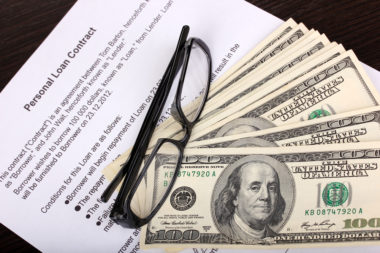The term “personal loan” can sound vague, and that’s because, in a certain sense, it is. A personal loan is a loan that is taken out in order to provide an infusion of cash into your individual finances. This can be done for many different reasons, whether you’re reacting to a financial emergency or trying to reach other financial goals.
The variety of reasons to take out a personal loan make it distinctly different from alternatives like a mortgage, car loan, or student loan, all of which have very specific uses. In addition, a personal loan is different from other discretionary spending sources like a credit card; personal loans typically come in a lump sum, as opposed to a revolving line of credit, which is an agreement that allows you to continue borrowing money when you meet the terms of the agreement.
Table of Contents
How Do Personal Loans Work?
While it can be helpful to take out a personal loan in order to cover a larger expense or make ends meet in a tight month, it’s important to understand how a personal loan works. This can help you avoid overstretching your debt and can allow you to use personal loans as an effective financial tool.
Personal Loan Terminology
Here are a few of the major components of a personal loan, all of which are critical to properly understanding and utilizing a loan of this nature:
- Interest: Interest is the money paid to the lender in order to be allowed to borrow their money and pay it back over a period of time.
- Interest Rate: This is the percentage or rate at which the interest on a loan is calculated.
- Principal: The principal portion of a loan is the actual money borrowed.
- Collateral: This is an asset pledged by the borrower as security for a loan.
- Monthly payment: This is a recurring sum paid in monthly installments that, when added up over the duration of the period of the loan, equals the total amount of principal and interest owed to the lender.
- Credit score: A credit score is a number that grades your borrowing history based on a series of factors including credit utilization, payment history, and the age of your lines of credit.
- Loan term: The term of a loan is the length of time that the loan lasts for.
- Revolving debt: Revolving debt is a form of credit in which, rather than receiving a lump sum and paying it back over a set period of time, a borrower borrows smaller amounts of money at their discretion against an established credit limit.
- Debt-to-income ratio: This is the percentage of your monthly income that your debts represent.
- Annual percentage rate: Also known as APR, the annual percentage rate is the amount of interest charged per year on a loan.
- Pre-qualified: Being pre-qualified refers to the early process of becoming eligible for an estimated loan amount before the loan application officially goes through.
- Pre-approval: This is a more advanced, involved stage of the loan application process; pre-approval indicates that a borrower is already approved to receive a loan if they decide to go through with the rest of the application process.
Types of Personal Loans
There are many different kinds of personal loans available. Make sure to understand which one works best for your unique situation before you apply.
- Unsecured personal loans: These are the most common kind of personal loans. They aren’t backed by collateral and, consequently, often have higher interest rates.
- Secured personal loans: As opposed to an unsecured loan, a secured personal loan is backed by a form of collateral like a savings account, house, or car, and often comes with a lower interest rate.
- Lines of credit: These can be both secured and unsecured; a line of credit provides a source of cash to draw on when needed — however, keep in mind that you’ll pay interest on the borrowed money.
- Cosigned loans: These are loans that have a cosigner who acts as a form of collateral by guaranteeing the loan if the primary borrower defaults on payments.
- Fixed-rate loans: This is a loan that comes with a fixed interest rate that remains steady over time.
- Variable-interest loans: Variable interest loans have lower interest rates to begin with, but the rate can fluctuate over time. This type of loan is most commonly associated with open lines of credit.
- Debt consolidation loans: These loans are designed to bring all of your debt together under a single loan. They are often easier to be approved for, but they do come with higher interest rates.
Benefits of a Personal Loan
The best part about personal loans is the variety of things that they can be used for. While things like mortgages and car loans are strictly limited in their use, personal loans can be taken out for a plethora of different reasons, including:
- Covering a medical emergency.
- Paying for dental services.
- Consolidating debt.
- Paying for educational costs.
- Covering home improvement projects.
- Helping to take care of unexpected expenses, in general.
Whatever your particular reason or need is, if you’re fully aware of the responsibilities and requirements involved, a personal loan can be an excellent way to help you reach your financial goals over the short term and the long term.
Image Source: https://depositphotos.com/





